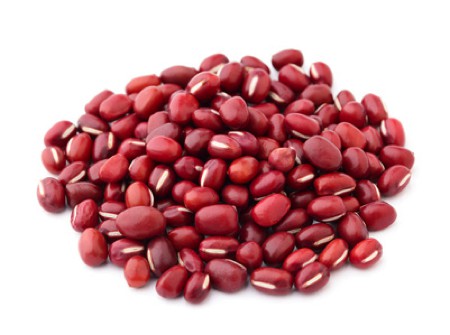By Nadia Marshall
What are Adzuki Beans?
Adzuki beans, also known as aduki or azuki beans are little red beans grown widely throughout East Asia and the himalayas... in fact, ‘Adzuki’ means ‘small bean’ in Japanese. They are a lovely little bean, relatively quick to cook and easy to digest (compared to kidney beans) but also hearty and nourishing.
What are its qualities?
From an Ayurvedic perspective, Adzuki beans have the following qualities...
Rasa: Astringent
Virya: Cooling
Vipaka: Pungent
Qualities: Hard, Heavy
Actions on the doshas: Balance Kapha and Pitta, aggravate Vata in excess
Action on the mind: Rajasic/Sattvic (1)
What are its medicinal qualities?
From an Ayurvedic perspective, adzuki beans are the perfect food medicine for people with excess Kapha or Pitta conditions such as excess heat, mucous, fluid retention or excess weight. Because of their astringent taste and pungent post-digestive effect, adzuki beans have a drying effect on the body but at the same time, also a cooling virya. So you can kind of think of their effect as a cool, dry wind that will pacifies excess heat and dries up excess moisture. However, anything that is cool and dry will also aggravate Vata so people with Vata constitutions or imbalances should avoid eating them too regularly or take great care to prepare them well - soaking them overnight and cooking them very thoroughly with plenty of oil and salt (to antidote the dryness).
In ‘Healing with Wholefoods”, Paul Pitchford explains the effect of Adzuki beans on the body from a Chinese Medicine perspective, which is very similar:
“...influences the heart and small intestines, tonifies the kidney-adrenal function, detoxifies the body; removes heat conditions; disperses stagnant blood; reduces swelling; diuretic and drying. Used for damp and watery conditions, leukorrhea, jaundice, ascites, diarrhea, edema, boils and to promote weightloss.” (2)
The Western viewpoint.
Adzuki beans are quite high in protein and fibre so have a low GI which means they release energy (in the form of glucose) very slowly into the blood stream and are good for stabilising blood sugar. Timothy Ferris would refer to them as a ‘slow carb’. Although they are quite high in protein, they are not a complete protein so you simply need to eat them with grains and veggies to solve that little problem (easy peasy!).
In terms of vitamins and minerals, they are super high in folate and manganese and also have a reasonable amount of thiamin, iron, magnesium, phosphorus, potassium, zinc, sodium and copper (3). Due to their mixture of both acid-forming minerals (phosphorus) and alkaline-forming minerals (potassium, magnesium, calcium, manganese, sodium and iron) they have a neutral pH effect on the body (4). And of course, they are gluten free.
How do you eat them?
In asia, they are often prepared as a sweetened paste to make delicious buns and other desserts but we usually eat them as a curry. They combine beautifully with pumpkin and also seaweed.
Why do I love them?
I love adzuki beans because they are so cute, are such a beautiful colour under-water when they’re soaking, cook quite quickly, are super tasty, feel much better in my belly than kidney beans and don’t seem to be too gas-forming at all, when eaten fresh.
Should anyone avoid eating them?
As mentioned, people with Vata constitutions or imbalances shouldn’t eat them all the time... but every now and then is totally fine (with lots of ghee and salt).
Where do you get them from?
They are quite widely available... in fact, I saw a bag at our local supermarket the other day, but I do live in Mullumbimby so that might be unusual. So try your local healthfood/wholefood store.
Check out the video below to see an awesome Adzuki Bean recipe!
Enjoy xxx
Love
Nadia x
References:
1) “Ayurvedic Cooking for Self-Healing” by Vasant Lad
2)“Healing Wholefoods” by Paul Pritchford 3)http://nutritiondata.self.com/facts/legumes-and-legume-products/4418/2
4)http://alkalife.com/blog/wp-content/uploads/2013/07/Acid-Alkaline-Food-Chart-ph-Balance-Alkalife.pdf




